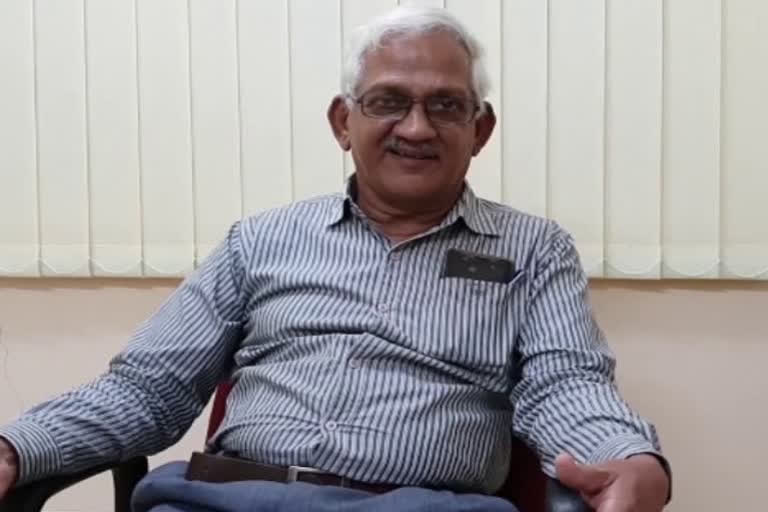Hyderabad:In order to revive the country’s economy, battered by the Coivd-19 pandemic, the Centre has come out with a Rs 20 lakh crore special package as part of its “Atmanirbhar Bharat” mission. Besides the industry and manufacturing sectors, the salient features of the package included major policy changes for agriculture and rural development. The announcements for agriculture, expected to usher in tectonic changes, have become the topics of heated debate than ever before.
It is not without reason that this has fuelled a debate. More than the usual loans, grants and waivers, the Centre has come out with a slew of important policy changes which would either drastically alter existing institutional mechanisms or make certain protective measures redundant.
Read more:Alarming! 30-40% restaurants to down shutters soon
A few of them are Amendments to the Essential Commodities Act, Agricultural Produce Marketing Committee (APMC) Act and Contract Farming as well as Direct Procurement Centres (Regulation of Cess) Act. Unleashing market forces, these are expected to change the face of Indian agriculture. Professor Athreya discusses these issues elaborately in an exclusive interview to ETV Bharat.
Q. Will the three major policy initiatives announced by the Union Government as part of the Atmanirbhar Bharat Mission bring in any positive change to the farmers by providing sustainable livelihood?
A. Let me first make it clear that the three initiatives are not new since they have been under active discussion for years. Moreover, changes have been effected in these statutes at times. As such, we need a clear understanding of the three major policy changes. First and foremost, the Essential Commodities Act was necessitated to prevent hoarding by big concerns and traders. Since it was enacted during the war time some people argue that this has outlived its utility. It is not correct and I do not subscribe to that view.
The reason is in a country like ours, the gap between demand and supply is so thin that a minor change or deficiency in the former could cause a huge impact leading to a spiral of price hike. Here, we should not lose sight of the fact that the farmers too are consumers. They sell their produce in the market and in turn spend the money according to their needs. Hence, they can’t remain immune to price hike of essentials.
Q. Given this situation, what necessary steps and changes are required in the present market mechanisms including that of the APMC?
A. Nearly 86% of those engaged in agriculture are small and marginal farmers and the extent of cultivable land under them is only 44%. On the other hand, the landlords who account for a mere 14%, have at their disposal 56% of land. However, the small and marginal farmers do not have market access in the neighbourhood as of now.
The MS Swaminathan Committee has recommended as early as in 2006 to establish APMC like Mandis within a five km radius to enable farmers to have better market access. Creating such infrastructure in many states is the need of the hour.
Apart from this, cooperative institutions should be involved in proper marketing of the meager and small amount of agriculture produce of the small farmers. In this, we should emulate the success achieved by Amul and Aavin (Aavin – TN Milk Producers Cooperative).
Q. What is the ground reality of Contract Farming and what steps are needed to be taken in this front?
A. Sugarcane farming better explains the trappings of contract farming. For a long time, sugarcane cultivation has been tied down to a contract with sugar mills and companies. These mills and companies owe the farmers crores of rupees and the volume of the pending dues is bourgeoning every year.
This is the plight of cane growers, who have the traditional experience in farming. Yet, the small and marginal farmers continue to remain helpless in front of a corporate house. Hence, it is the responsibility of the government to bring in safeguards in contract farming to benefit the farmers.
Q. More than 50% of employment in India is dependent upon Agriculture and Rural-based allied activities. Now, the migrant labourers are returning homewards. In this situation, what should be done for employment generation in the rural areas?
A. Migrant labourers, including internal migrants, heading home due to the extended lockdown, are unlikely to return to the urban centres in the near future. The government has to undertake land reform in such an extensive manner so that the surplus lands and the vast tracts of fallow land are given to the landless. This is long overdue and as such has to be carried out in earnest without any further delay. When Manmohan Singh was the Prime Minister, a committee was constituted to speed up “The Unfinished Task of Land Reforms”.
Now, the government should distribute the local land resources to those migrants returning to their native villages and engage them in agriculture. It is a long and arduous process. Yet, more than the three policy initiatives of the government, I consider land reforms as fundamental and crucially important one upon which the markets should rest to be fruitful. For, without such structural changes cosmetic approaches would not yield the desired results or ensure sustainable livelihood for the farmer.
